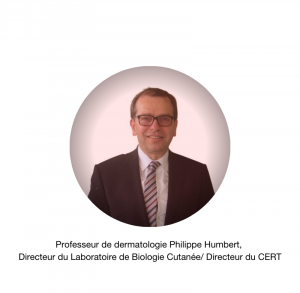

SUMMER, CANCER AND THE SUN

Enjoying family and friends, travelling, walking, bathing,… The summer period is a time for relaxation and simple pleasures.
Although these times are important and necessary for everyone to recharge their batteries, it is important to beware of the sun, which can be dangerous for your skin, especially if you are undergoing cancer treatment.
Why is it dangerous? How to protect yourself from it?… I bring you some answers through this article, which I hope will be useful to you.
WHY IS THE SUN DANGEROUS FOR OUR SKIN?
WHAT ARE UV RAYS?
We all know how important it is to protect against UV rays, without really knowing what they are. UV is the ultraviolet radiation emitted by the sun.
There are three types: UVA, UVB and UVC.
While UVC is filtered out by the ozone layer, UVA and UVB rays reach us.
UVA rays are present all year round and even on cloudy days, they account for 95% of UV rays. They are painless, but are no less dangerous because they penetrate deeper into the dermis and are mainly responsible for pigmentation spots, skin ageing, wrinkles, sun intolerance, hyperpigmentation and the development of skin cancers.
UVB rays represent 5% of UV rays. They penetrate less deeply but can be very painful and are responsible for sunburn, burns, blisters and skin cancer.
Professor Humbert’s recommendations:
“Ultraviolet rays, are devious rays because we don’t feel them, they are present even when the sky is cloudy. They pass through the cloud layer, and pass into the water. So that when you are in the water or under a cloudy sky, you can sometimes feel the cold (because of the absence of infrared, which does not penetrate the water, that of the swimming pool and that of the clouds) while ultraviolet rays will actually be there to gradually cause the signs of helioderma, that is to say photoaging.”
We are not all equal in the face of UV rays, our skin does not react in the same way according to the characteristics of each person.
Also, certain substances, known as “photosensitizers” amplify the effects of the sun.
WHAT IS PHOTOSENSITIZATION?
Photosensitization is an abnormal reaction of the skin to the sun, it results from the meeting of ultraviolet rays with a sensitive substance present in the skin. It can be a product for local use (perfume, cosmetic) or a molecule brought to the skin by the bloodstream (photosensitizing drug).
Photosensitivity reactions are characterized by redness of the skin, itching, irritation, sometimes with a rash of blemishes, urticaria-like lesions or even blisters, which have the particularity of appearing on areas that have been exposed to the sun, at least in the beginning.
PHOTOTOXICITY AND PHOTOALLERGY
There are two types of photosensitization:
The phototoxic reaction, by far the most common, is a sunburn disproportionate to the exposure.
This is a photochemical reaction that occurs in people who have taken certain medications or applied certain products to their skin before sun exposure. This reaction is called “phytophotodermatitis”, when the “photo-triggering” agent is a plant. An example is meadow dermatitis. All phototoxic reactions occur only on areas of skin exposed to the sun, usually within a few hours of exposure.
THE SUN AND CANCER
 DRUG PHOTOSENSITIZATION
DRUG PHOTOSENSITIZATION
The majority of drugs used in chemotherapy contain photosensitizing molecules, so sun exposure is contraindicated.
Once the chemo treatment is over, your skin remains very sensitive to the sun. It takes about a year to eliminate its effects, so even after the treatments, caution is advised.
Radiotherapy also weakens your skin. It is imperative not to expose the irradiated area to the sun’s rays for at least 1 year. This area will remain fragile all your life and you must continue to protect it properly.
In case of immunotherapy and/or hormone therapy, the sun is not contraindicated, but be careful, your skin remains fragile and exposure must be moderate
TAKE CARE OF YOUR SCARS
When skin is damaged, it triggers a rebuilding mechanism to repair itself. But this healing process is slow and can take several weeks or even months. During this healing process, the epidermis is thin and fragile, which makes it particularly sensitive to sun exposure.
The action of UV rays can trigger an inflammatory response in the skin that will delay healing and sometimes even lead to poor healing.
Exposure to the sun also increases the risk of having a mark and in particular a “post-scarring hyperpigmentation” at the site of the wound because the skin is so fragile that the colour it takes on will remain .
As for old scars, they still require attention, the skin at this level will always be less resistant and less elastic than skin that has not suffered. This is why all scars must be protected from the sun throughout your life.
PROTECT YOURSELF FROM THE SUN
Going on holiday for a few days to recharge your batteries and take your mind off your treatment is not forbidden, but it is important to take a few precautions to protect yourself from the sun.
Choose the hours when the sun is less strong to go out (before 10 am and after 4 pm in summer) and stay in the shade as much as possible.
The best way to limit your skin’s exposure to UV rays is to protect it with clothing.
To protect your scalp, several of our ” fighting sisters” offer pretty chemo hats and scarves.
For your body, it is also possible to wear comfortable clothing that protects you from UV rays. I invite you to (re) discover the Miel Melba or Fan and Lia collections, designed by former patients.
If you are planning to swim, the Garance and Marli brands, also founded by “cancer survivors”, offer swimsuit shapes that can accommodate your breast prosthesis and cover your scars.
For the areas of your skin that remain uncovered, a sun cream with a high index is essential and the application has to be repeated every 2 hours.
Finally, moisturize your skin. In summer, the sun’s rays, heat, sea salt and chlorine from swimming pools make it drier and sometimes uncomfortable. The Ozalys moisturizing care range, combining performance and pleasure of use, will allow you to moisturize your skin in complete safety.
COSMETICS AND THE SUN
BEWARE OF PHOTOSENSITIZING AGENTS
The Sun and cosmetics don’t always go well together. Certain active ingredients, including natural ones, can be harmful to your skin and cause skin reactions when exposed to the sun.
They can occur without any particular predisposition and regardless of your skin type.
They mainly result in brown spots, irritation, redness and blisters.
In some cases, a photoallergic reaction that manifests itself as eczema may appear.
INGREDIENTS TO AVOID WHILE IN THE SUN
Beware of natural cosmetics that contain plant extracts and/or essential oils of citrus fruits (lemon, bergamot, orange, mandarin). As Céline Couteau, a doctor of pharmacy, explains, “A hand or face cream containing plant extracts can be perfectly tolerated in winter, but may lead to the risk of brown spots and burns in summer, due to UV rays. ”
Aloe vera, known for its soothing, healing and anti-inflammatory properties, can also be photosensitizing for some people. This is why we have chosen aquacteen as the flagship active ingredient in our range.
Retinol, an anti-ageing active ingredient that is very popular but also very irritating, is also contraindicated in the sun. It is generally used in night creams and is known to be photosensitizing.
 I suggest that you use Ozalys Precious Care, which is adapted for you. It is a two-in-one treatment that you can use both as a day cream and a night cream.
I suggest that you use Ozalys Precious Care, which is adapted for you. It is a two-in-one treatment that you can use both as a day cream and a night cream.
“Safety is a major criterion in our range of care products, which is why we have paid particular attention to our formulations by excluding all phototoxic substances from our care products, and in particular natural citrus extracts which are the source of phototoxic reactions. ”
PERFUME AND DEODORANT
Many fragrances contain extracts of essential oils, such as bergamot and/or citrus, which can make your skin sensitive to the sun.
The risk of ending up with pigmented spots after application cannot be excluded. It is best to avoid using your perfumes directly on the skin in summer. However, you can safely use Elixir, the Ozalys eau de parfum that has successfully passed phototoxicity tests.
Céline Couteau, also draws attention to aerosol deodorants which, in the mist they create upon application, can deposit particles on the face or other parts of the body. “There have been cases in dermatology of facial hyperpigmentation associated with the use of spray deodorants in the summer.”
You won’t encounter this problem with our deodorant cream, which allows for a gentle and safe targeted application. It has also been tested for phototoxicity
THE SPFs
SPF is a sun protection factor, present in some cosmetic products. We have chosen not to include these UV filters in the Ozalys skincare range.
Linda Berkani : “SPFs are excluded from our formulation charter, as many UV filters are being singled out for their skin sensitizing or endocrine disrupting properties. For non-incriminated UV filters, we have not found a satisfactory compromise, combining effectiveness, safety and worldwide compliance.
Moreover, the durability of an SPF is limited in time, so it is necessary to re-apply a sun product regularly for it to be effective.
An SPF in a face or body cream would imply to apply the product several times a day, which is rarely done in reality“.
THE SUN, AN ALLY FOR YOUR HEALTH
SUNLIGHT AS AN ANTIDEPRESSANT
After the grey and cold winter weather, the return of the sun is always news that we welcome with joy. There is nothing like a beautiful sunny day to put on a radiant smile and enjoy the simple pleasures of life.
Professor Humbert’s opinion:
“The sun is an ally of our morale. Phototherapy is one of the methods to combat depression. There are fewer depressions in summer than in winter. Let us not close the shutters to this beautiful light that invades our homes.
The cells of our skin, the keratinocytes, can in some people become addicted to the sun. There is a real phenomenon of addiction that sets in. We know people who cannot do without exposure to the sun, a little like the smoker who knows the dangers of smoking and yet goes to light his cigarette.
Keratinocytes produce endorphins, the pleasure molecules found in the brain that are produced by the action of a drug. Thus under the effect of the sun, the skin cells will produce these morphine derivatives which will give sunbathing all its effects of well-being. But BEWARE, this pleasure of being under the sun will be quickly attenuated by the harmful effects that exposure will produce, so don’t abuse it”.
SUNLIGHT, A SOURCE OF VITAMIN D
 If the sun is good for your morale, it is also good for your body. The sun, through its ultraviolet rays, allows the body to synthesize vitamin D.
If the sun is good for your morale, it is also good for your body. The sun, through its ultraviolet rays, allows the body to synthesize vitamin D.
Professor Humbert’s opinion:
“The sun is the ally of our bones and our calcium metabolism… It is under the effect of its rays, and in particular, UV B rays, that Vitamin D is synthesized in the skin, or at least the precursors of Vitamin D, which will need to be hydroxylated at two places in the body, the kidney and the liver.
A quarter of an hour of exposure of the hands and face per day is enough to get our daily amount of vitamin D. And for those who don’t want or can’t get that 15 minutes exposure, vitamin D can be taken orally.”
TO CONCLUDE
Let me conclude this article with a few words from Professor Humbert: “To master the sun, we must know it, know its effects, and know how to protect ourselves from it.”
For those who will have the chance to escape for a few days during the summer, I wish you pleasurable moments of relaxation, discovery and joy. Take care of yourself and your skin by being vigilant with the sun.
For those who do not have the pleasure of leaving, the Ozalys team remains at your side all summer long to provide you with advice, tenderness and comfort.

